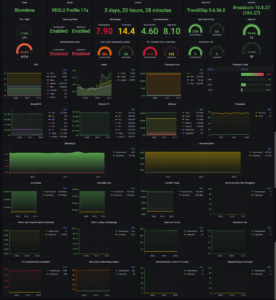Blogging is more than just hitting “publish” and hoping for the best. It’s an ongoing process that requires attention, care, and occasionally, a little TLC. If you want your blog to remain relevant in today’s fast-paced digital world, updating your content isn’t just important—it’s essential.
Imagine pouring your heart into a post only to watch it gather dust while newer articles take center stage. That’s where the art of content updating comes into play! Knowing when to refresh what you’ve already created can breathe new life into old posts and keep readers coming back for more.
This guide will walk you through recognizing when it’s time to update blog content, explore the benefits of doing so, and provide practical tips for effectively refreshing your work. Let’s dive right in!
Signs That Your Blog Content Needs an Update
One of the first signs that your blog content needs an update is a drop in traffic. If you notice fewer visitors than before, it might be time to refresh outdated posts.
Another indicator is engagement metrics. Are readers leaving quickly or not commenting? This suggests your content may no longer resonate with your audience.
Check for relevance as well. If the topics feel stale or disconnected from current trends, updating them can rekindle interest and encourage sharing.
Also, look out for changes in SEO performance. Keywords that once ranked high may have lost their edge over time due to algorithm updates or industry shifts.
If new information has emerged related to your topic, it’s crucial to incorporate these insights into older posts. Keeping facts current not only enhances credibility but also keeps readers coming back for more.
The Benefits of Updating Blog Content
Updating your blog content can significantly enhance its relevance and value. Fresh information attracts both search engines and readers, boosting your visibility online.
When you refresh outdated posts, they often rank better in search results. This means more traffic to your site over time.
Another advantage is that it establishes authority in your niche. Readers appreciate up-to-date insights, which encourages trust and loyalty towards your brand.
Additionally, revisiting older content allows you to incorporate new keywords or trends. This strategic optimization keeps your material aligned with current interests.
Regular updates also encourage social sharing as followers appreciate fresh perspectives on familiar topics. Engaged audiences are likely to spread the word about valuable content they find appealing.
Updating provides an opportunity for internal linking. Directing readers from updated articles to newer ones enhances user experience while keeping them on your site longer.
Timing: When Is the Best Time to Update Your Blog Content?
Timing plays a crucial role in the effectiveness of your blog updates. The best moments to refresh your content often align with specific trends or events in your niche. For instance, if there’s a significant industry change or newsworthy event, it may be time to revisit related posts.
Consider seasonal adjustments as well. Certain topics resonate more during specific times of the year. Aligning updates with these cycles can enhance relevance and engagement.
Regularly checking analytics is essential too. If you notice declining traffic on certain posts, that signals it’s time for an update. Also, keep an eye on keyword rankings; fluctuations might indicate that the content needs refreshing to stay competitive.
Don’t overlook user feedback. Comments and questions can direct you toward areas needing enhancement or clarification within existing articles.
How Often Should You Update Your Blog Content?
The frequency of updating your blog content can vary significantly depending on several factors. Ideally, you should revisit popular posts at least once a year. This allows you to refresh outdated information and enhance SEO performance.
For posts receiving consistent traffic, consider updates every six months. Trends change rapidly; keeping relevant insights can maintain audience engagement.
If you notice any changes in your industry or niche, don’t hesitate to update affected articles immediately. Being proactive demonstrates authority and reliability to your readers.
Content that generates ongoing discussion may require more frequent updates. Engaging with comments might inspire new directions for revisions or additions.
Always monitor analytics closely. If specific topics surge in popularity, seize the opportunity by enhancing related older content promptly for maximum impact.
Tips for Effectively Updating Your Blog Content
Start with a fresh perspective. Read your content as if you’re encountering it for the first time. This helps identify areas that need clarity or additional information.
Next, ensure all statistics and facts are current. Outdated data can mislead readers and harm credibility. A quick search can often refresh these details.
Optimize your SEO elements. Update headings, meta descriptions, and keywords to align with current trends and search behaviors.
Consider adding new visuals or multimedia components. Images, infographics, or videos can enhance engagement and provide context in unique ways.
Encourage reader interaction by including updated calls-to-action that resonate more effectively with your audience’s needs now than before.
Promote updates on social media channels to drive traffic back to improved posts. Share snippets of newly added insights to pique interest among followers.
Conclusion
When to Update Blog Content is not just a matter of keeping things fresh; it’s essential for maintaining relevance and authority in your niche. Regular updates can improve search engine rankings, engage your audience, and drive traffic to your site.
Recognizing the signs that indicate when to make changes is crucial. If you notice outdated statistics, broken links, or declining engagement on certain posts, it’s time to take action. The benefits are clear: increased visibility in search results, enhanced user experience, and greater credibility with readers.
Timing also plays a significant role. Monitor trends within your industry and seasonal events that may impact the relevance of your content. Setting a schedule for regular reviews helps ensure you’re consistently providing value.
How often should you update? While there’s no one-size-fits-all answer, aim for at least once every six months or sooner if circumstances dictate.
When updating content, focus on clarity and readability while incorporating new information seamlessly into existing frameworks. Use visuals where appropriate and optimize for SEO without compromising quality.
With these strategies in mind, you’ll be well-equipped to keep your blog dynamic and valuable over time. Embrace the process of updating as an opportunity to connect more deeply with your audience while enhancing the overall integrity of your site.




